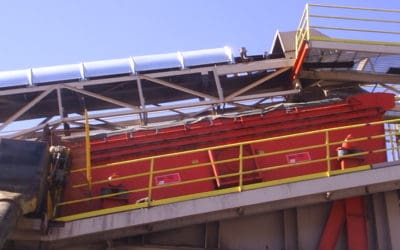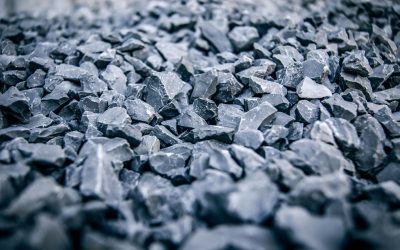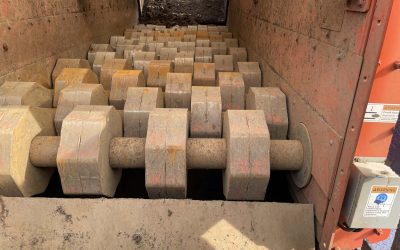Flip-flow screens, also known as flip flop or elastic mesh screens, are machines designed to efficiently screen sticky, wet, and other difficult materials. Flip-flow screens are used in a number of industries to separate everything from aggregate and minerals to inhomogeneous recyclables, construction waste, and biomass.
Because of their unique design they provide operators a number of benefits. We’ll highlight additional details about flip flop screen design, usage, and benefits below.
Flip-Flow Screen Design & Working Principle
Vibrating flip-flow screens are increasingly employed in materials screening and preparation applications. This is due in large part to their high efficiency. In principle, a flip-flow screen is a subclass of other high frequency vibratory screens.
Flip-flow screens work through the combination of a double vibration principle and a flexible polyurethane-type screen media. The dual-vibratory forces work to apply linear acceleration to the materials traveling across the screen. Vibrations are simultaneously applied to the elastic screen, which rapidly stretches and relaxes. The stretching and relaxing of the screen transfers energy to the material, causing it to “jump” or “pop”. This secondary vibration, in turn, enhances the separation of materials.
How Are Flip-Flow Screens Used?
You can find this screening equipment used across a large number of industries. They’re most often used to screen difficult materials used in the manufacturing process for everything from sand, concrete, and compost. However, flip flop screens are also used in municipal solid waste processing.
Screening Difficult Materials

Materials like municipal solid waste, wood, and other organic biomass are notoriously difficult to screen. Other equipment, like trommels, tend to handle these materials poorly. This is because their drum, which spins and screens the materials passing through it, regularly becomes clogged with dense, higher moisture particles.
Flip flop screens vibrate at a high frequency which transfers constant energy into the material particles. This helps prevent the materials from clumping or sticking to the screen media. In addition, the media itself, a flexible polyurethane mat, makes for a poor surface for materials to adhere to.
Other Common Uses
Flip-flow screening equipment is used in other applications, as well. These machines can easily screen aggregate like coal or valuable minerals like gold ore. They’re also used to classify and dewater very fine materials like natural riverbed sand and manufactured sand.
Benefits of Flip-Flow Screens
Flip-flow screeners offer a number of benefits over other equipment. Their compact design is particularly advantageous in both reducing machine footprint and increasing operational efficiency. Because most models require fewer moving parts than alternative screening equipment, flip flop screens are much more modular.
High Screening Efficiency
In addition, both as a result of their polyurethane screen and streamlined design, they’re less prone to mechanical wear and tear, and are generally easier to maintain. This latter point is of importance when screening difficult materials.
Wet and sticky materials in particular, like consumer recyclables and biomass, can clog and blind conventional screen media. The elastic mesh media used in flip-flow screens is ideal for these materials. However, the media is as effective for other common materials from glass and scrap to fine-grained minerals and slag.
Improved Screen Media Durability
As an added advantage, the screening media itself is generally longer lasting. The elastic mesh is durable, less prone to blinding or binding, and is simple to replace. This helps to reduce downtimes and mitigate ongoing maintenance costs.
Lastly, the elastic mesh screen mats are self-cleaning, as the high acceleration forces directed to the mats keeps the screening surface clear of debris. Again, this offers an added benefit of less downtime during routine maintenance.
The BIVI-TEC® Flip-Flow Screening Solution
The BIVI-TEC® flip-flow screen was developed to screen even the most challenging materials. Its dual-vibratory screening process coupled with high-quality elastic mesh mats are capable of handling high-moisture materials.
Manufactured by AEI, the BIVI-TEC® rugged construction requires less maintenance, reduces downtime, and uses less energy than alternative screening equipment. Whether you need a long-lasting machine for screening aggregate or a plant able to efficiently separate C&D waste – the BIVI-TEC® can deliver. Looking for a flip-flow screen for sale? Contact our sales team to learn more and request a quote today!


